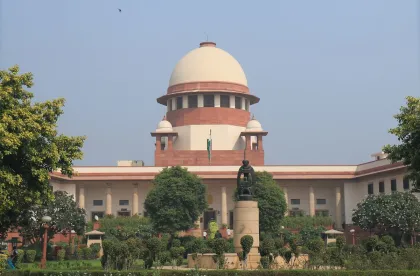INTRODUCTION
Recently, the Indian Supreme Court in Rajendra Bajoria and Ors v. Hemant Kumar Jalan and Ors.,1 ruled on the scope of ‘rejection of plaint’ in a civil suit under the provisions of Order VII Rule 11 of the Civil Procedure Code, 1908 (“Code”). The Supreme Court was hearing an appeal against an order of the Division Bench, Calcutta High Court (“Division Bench”) allowing an appeal against an order of the Single Judge, Calcutta High Court (“Single Judge”).
The Civil Procedure Code, 1908 (“Code”) includes complete provisions with respect to the life cycle of a civil suit under Indian law. Upon filing a civil suit or a commercial suit, a court can reject the plaint on satisfaction of grounds listed under Order 7 Rule 11 of the Code. These include under-valuing of claim, insufficient stamping, suit being barred by law etc. Among these, a key ground for rejection is where the plaint does not disclose a cause of action.2 In the instant case, the Supreme Court analysed whether a plaint, containing prayers or reliefs that cannot be granted to the plaintiff, should be rejected on the ground that the plaint does not disclose a cause of action.
FACTUAL BACKGROUND
A partnership firm, ‘Soorajmull Nagarmull’, was constituted under a deed of partnership dated December 6, 1943 (“Firm”). On the demise of all partners, the legal heirs of three partners (“Plaintiffs/Appellants”) instituted a civil suit (“Civil Suit”) before the Single Judge, Calcutta High Court (“Single Judge”) against the legal heirs of the other partners in the Firm (“Defendants/Respondents”).3 In the Civil Suit, the Plaintiffs prayed for a declaration that the Plaintiffs were entitled to the assets and properties of the Firm basis their status as legal heirs of the original partners in the Firm. The Defendants filed an application seeking rejection of plaint on the ground that the plaint did not disclose a cause of action.4 The Single Judge dismissed the application filed by the Defendants vide order dated September 22, 2017.
Aggrieved by the order of the Single Judge, the Defendants preferred an appeal before the Division Bench.5 The Division Bench vide order dated September 14, 2018 (“Impugned Judgment”), allowed the appeal thereby rejecting the plaint filed in the Civil Suit. Aggrieved by the order of the Division Bench, the Defendants filed the appeal before the Supreme Court.
JUDGMENT - SUPREME COURT AND CALCUTTA HIGH COURT
At the outset, the Supreme Court stated that while adjudicating an application for rejection of plaint for want of cause of action, the court must consider whether the averments in the plaint are meaningful and not merely formal towards disclosing the requisite cause of action. In this regard, courts must be wary of clever drafting which might create an illusion of a cause of action in a suit.6 Therefore, a court must read the plaint in entirety and engage in a meaningful reading of the averments to assess if the plaint discloses a clear right to sue. If the same is absent, the court should reject the plaint under Order VII Rule 11.
Further, a court must conclude as to whether the reliefs claimed in the plaint can be granted in the background of the facts presented in the plaint. It relied on its previous judgment in Pearlite Liners v. Manorama Sirsi,7 which held that a suit in which no relief can be granted under law, is liable to be rejected at the threshold.
Although the Supreme Court did not itself weigh the reliefs claimed by the Plaintiff, it discussed the findings of the Division Bench in the Impugned Judgment with respect to each relief as under:
-
Declaration that Plaintiffs along with the Defendants are entitled to the Firm’s assets as heirs of the original partners of Firm
Division Bench stated that the underlying law of partnership states that partners of a firm are entitled only to the profits of the firm and, upon dissolution of the firm, to the surplus of the sale proceeds of the assets and properties of the firm after meeting the liabilities of the firm. Particularly, partners do not have any right, title or interest in respect of the assets and properties of a firm so long as the firm is carrying on business. In this background, the Division Bench held that Plaintiffs, even as legal heirs of the original partners, cannot maintain any claim in respect of the assets and properties of the Firm and as a result, the prayer for such declaration was not maintainable in law.
-
Declaration that Plaintiffs along with the Defendants are entitled to represent the Firm in certain proceedings for acquisition of a land
The Division Bench stated that prayer no. (b) was a consequential relief which could have only been granted if the first prayer were allowed. Since prayer (a) cannot be granted in law, prayer (b) was equally not maintainable in law.
-
Decree for perpetual injunction restraining Defendants from representing themselves to be the authorised representative of the Firm
The Division Bench adopted a similar approach for prayer (c) stating the same was a consequential relief to prayer (a) and (b). 8
-
Decree for mandatory injunction directing Defendant No. 1 to disclose full accounts and particulars of Firm’s assets, etc for the purpose of its dissolution; & (e) Decree for dissolution of the Firm and for the winding up of its affairs
The Division Bench stated that under the Partnership Act, only the partners of a firm can seek dissolution of a firm. Since the Plaintiffs were admittedly not partners of the Firm,9 the dissolution of the Firm cannot be ordered by the court at the instance of the Plaintiffs. Therefore, the Plaintiffs were neither entitled to claim dissolution of the Firm, nor they were entitled to pray for accounts for the purpose of dissolution of the Firm.10 With the above findings, the Division Bench remarked that sending the parties to trial will be a futile exercise involving costs and time of the parties as well as of the court. As a result, the Division Bench rejected the plaint for not disclosing any cause of action.11
The Supreme Court upheld the above findings of the Division Bench and stated that the reliefs sought by the Plaintiffs were not maintainable in law.12 As a result, the Plaint ought to be rejected under Order VII Rule 7 of the CPC. The Supreme Court further noted that that the underlying object of Order VII Rule 11 CPC is that if a plaint does not disclose a cause of action, the court cannot permit the plaintiff to unnecessarily protract the proceedings.13
CONCLUSION
While parties generally emphasize on facts and cause of action while drafting a plaint, lesser attention to prayers and maintainability of reliefs could render the civil suit / commercial suit vulnerable. Careful analysis of the applicable law and of maintainability of reliefs are necessary to save the plaint from rejection.
Order VII Rule 11 of the CPC does not include a ground for rejection based on “reliefs”. However, reliefs are inter-linked with cause of action, and therefore are consumed within the ground relating to disclosure of cause of action in the plaint.
Careful drafting is often considered as a tool to prevent rejection of plaint. However, since the test for rejection on ground of reliefs is simply on the touchstone of maintainability in law, it will stand strong against possible workarounds adopted by way of dexterous drafting in order to establish presence of cause of action in the plaint.
Often, parties believe that courts will not, and ought not, to engage in a mini-trial while considering applications for rejection of plaint. However, while courts recognise that the power to terminate a civil action is drastic and must be carefully exercised, they also recognise that sham litigations should be ended at the initial stage of the proceedings. Hence, parties must be aware that an in-depth analysis of cause of action, reliefs and the applicable law is possible at this stage, particularly when the courts believe that the reliefs are not maintainable.
Additionally, during the first hearing on the application, one needs to be mindful of the court’s outlook towards the plaint, the cause of action and the reliefs sought in the plaint. If the court opines that the plaint does not contain maintainable reliefs, recourse is still available to plaintiffs under the law to prevent rejection of the plaint at this stage.
As such, attention to the law and civil procedure at the inception and during the course of initial hearings will go a long way in preventing a plaint from being rejected, and assure the continuance of the proceedings in a civil/commercial suit.
FOOTNOTES
1 Civil Appeal Nos. 5819 - 5822 Of 2021
2 Order VII Rule 11(a).
3 ¶ 3.
4 G.A. Nos. 1688 and 1571 of 2017.
5 APO Nos. 491 and 520 of 2017.
6 Relying on a judgment of the Supreme Court in T. Arivandama v. T.V. Satyapal, (1977) 4 SCC 467.
7 (2004) 3 SCC 172
8 ¶ 31.
9 Section 40, Partnership Act,
10 ¶ 31.
11 ¶ 32.
12 ¶ 19.
13 Relying on judgment of the Supreme Court in Dahiben v. Arvindbhai Kalyanji Bhanusali & Ors., (2020) 7 SCC 366.



 />i
/>i
